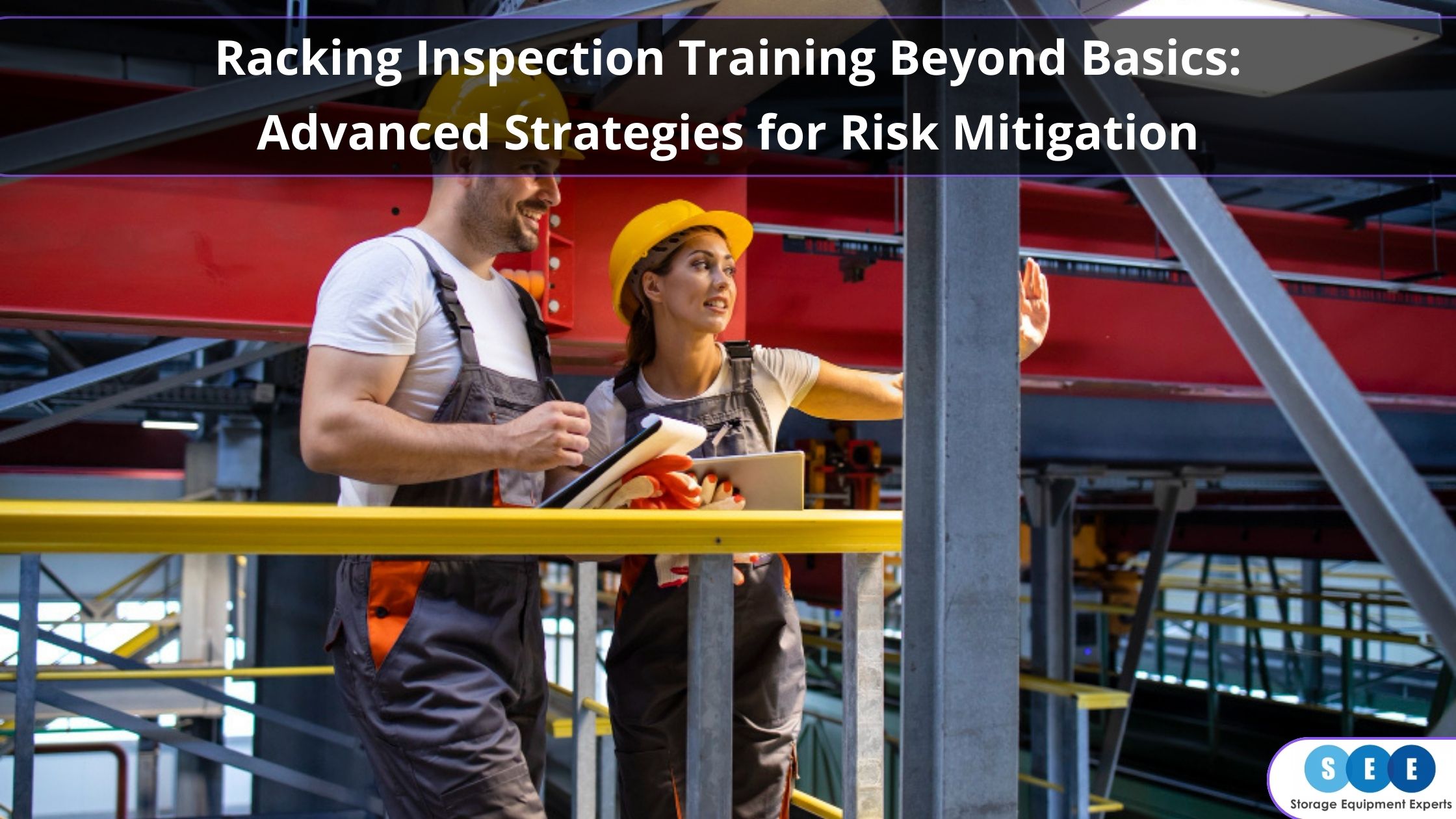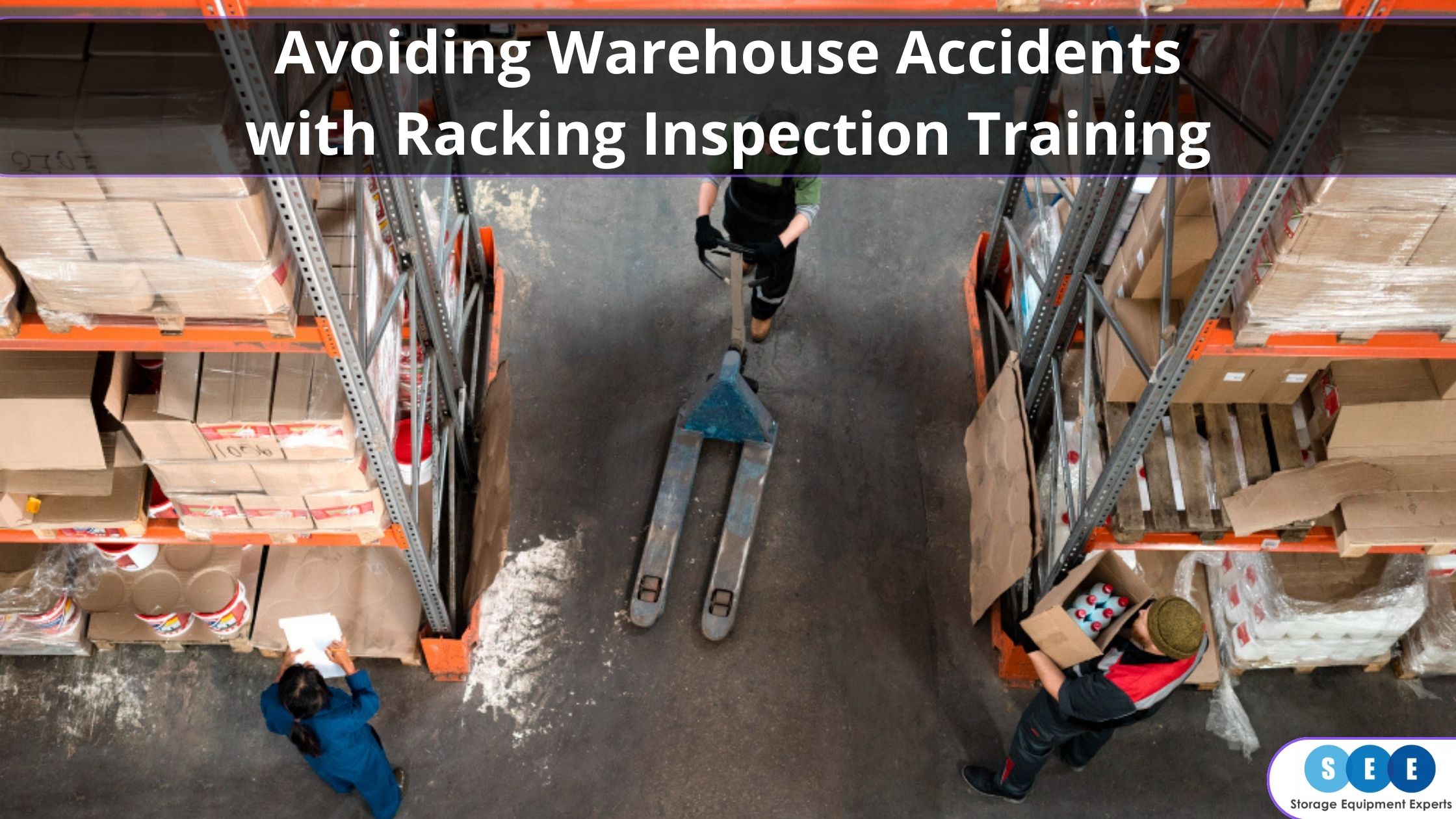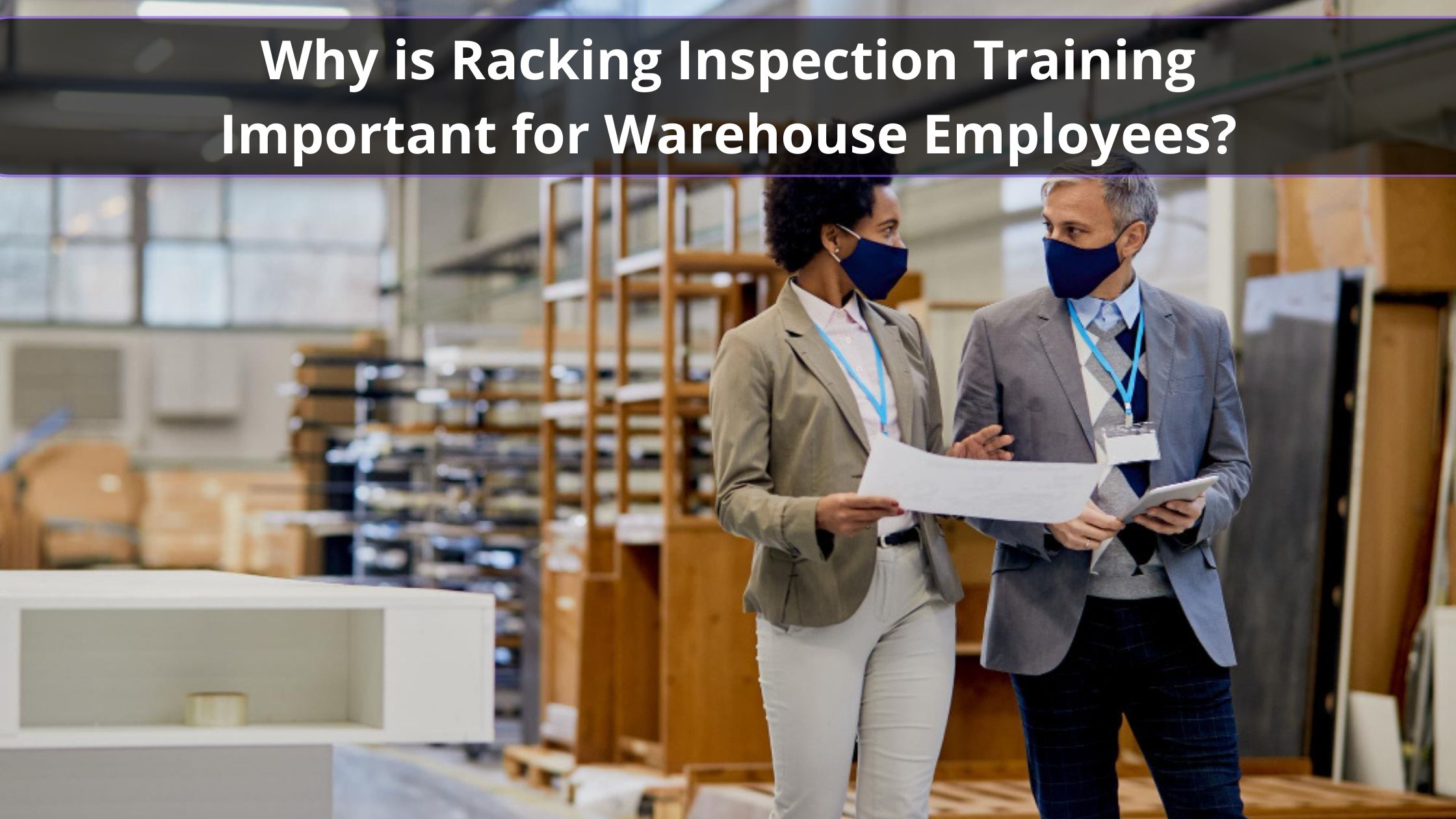Key Trends in Racking Inspection Training: What to Expect in 2024
Warehouse safety and efficiency hinge significantly on regular racking inspection training. Of course, these inspections do not exist in a vacuum – as industries adapt, so do the methods and tools used for conducting inspections and the ways in which racking inspection professionals are trained.
This blog aims to explore the trends expected for the remainder of 2024 for racking inspection training, focusing on advancements and innovations set to enhance learning experiences and safety outcomes.
Emphasis on Technology Integration
The integration of technology in training programs is becoming more prominent. Tools like virtual reality (VR) and augmented reality (AR) offer immersive learning experiences, allowing trainees to interact with virtual warehouse environments – getting as close to hands-on training as possible without interfering with the day-to-day operations of an active warehouse site.
Simulation software plays a core role, providing realistic scenarios that help trainees practice inspections in a controlled setting. This technological shift makes training more engaging and ensures that participants are better prepared for real-world challenges.
Enhanced Online Training Platforms
Comprehensive online training platforms are on the rise, offering flexibility and accessibility that traditional methods lack. E-learning modules provide interactive content, including video tutorials and online assessments, making it easier for trainees to grasp complex concepts at their own pace.
These platforms often include features such as progress tracking and personalised learning paths, which cater to individual needs and improve overall training effectiveness.
Focus on Continuous Learning and Certification
The trend towards ongoing education and certification programs is gaining momentum. Continuous learning is essential for keeping up with the latest industry standards and practices. Regular certification renewals ensure that professionals maintain up-to-date knowledge (staying abreast of sometimes fast-moving changes) and skills, contributing to safer and more efficient warehouse operations.
These programs also help in building a culture of continuous improvement and professional growth.
Incorporation of Data Analytics
Data analytics is increasingly used to enhance training effectiveness. Utilising technology to track trainee progress and identify knowledge gaps, analytics will provide valuable insights that can personalise learning experiences.
Uses of data analytics can include:
- Tracking Progress: Analytics tools monitor trainee performance over time, providing detailed insights into their learning journey.
- Identifying Knowledge Gaps: Trainers can pinpoint areas where trainees struggle and need additional support.
- Personalizing Learning Experiences: Customizing training modules based on individual performance data ensures that each trainee receives the specific instruction they need.
These data-driven approaches benefit both trainees and trainers:
- For Trainees: Personalised learning paths help trainees focus on their weak spots, enhancing their overall competence and confidence.
- For Trainers: Data-driven insights allow trainers to refine their programs, making them more responsive to trainees’ needs. This can lead to more effective teaching methods and improved training outcomes.
Collaborative Learning and Peer Training
Collaborative learning environments are becoming more popular in warehouse racking inspection training. Peer training and group learning sessions encourage knowledge sharing and enhance engagement among trainees. These methods allow for a more collaborative culture, where individuals learn from each other’s experiences and insights.
Group activities and discussions improve understanding and build teamwork and communication skills, all of which are beneficial for effective warehouse operations.
Real-World Case Studies and Practical Exercises
Incorporating real-world case studies and practical exercises into training programs is highly beneficial. These methods provide hands-on experience and prepare trainees for actual inspection challenges.
Practical exercises simulate real-life scenarios, allowing trainees to apply their knowledge in a practical context. Real-world examples can also extend to the consequences of poor pallet racking inspections – giving the trainees a more direct, tangible look at the effects of their work.
This approach ensures that they are well-equipped to handle the complexities of racking inspections in their day-to-day roles and understand that while the task can sometimes seem like a box-ticking exercise, it has the potential to save lives and prevent life-changing injuries.
Greater Emphasis on Safety Protocols
There is an increased focus on safety protocols in training programs. Advanced safety procedures and emergency response training are becoming integral parts of the curriculum. Emphasising safety ensures that trainees are well-versed in the protocols required to maintain a secure working environment.
Key elements will include:
- Advanced Safety Procedures: Training now covers more sophisticated safety measures, ensuring that all staff are well-versed in the latest industry standards.
- Emergency Response Training: Programs include detailed instructions on how to react during emergencies, such as equipment failures or accidents.
The benefits of this renewed focus should be immediate:
- Enhanced Safety: Prioritising safety protocols means that warehouses can significantly reduce the risk of accidents and injuries.
- Preparedness: Employees trained in these advanced protocols are better prepared to handle unexpected situations, ensuring a swift and effective response.
This focus on safety protocols ensures that all employees contribute to a safer and more efficient working environment.
Conclusion
In summary, the key trends in racking inspection training for 2024 include the integration of advanced technologies, enhanced online platforms, continuous learning and certification, data analytics, collaborative learning, practical exercises, and a stronger emphasis on safety protocols.
Staying updated with these advancements needs to be a priority for warehouse managers and employees to ensure improved safety and efficiency. You can always reach out to the team at SEE Racking Inspections if you need further support.










